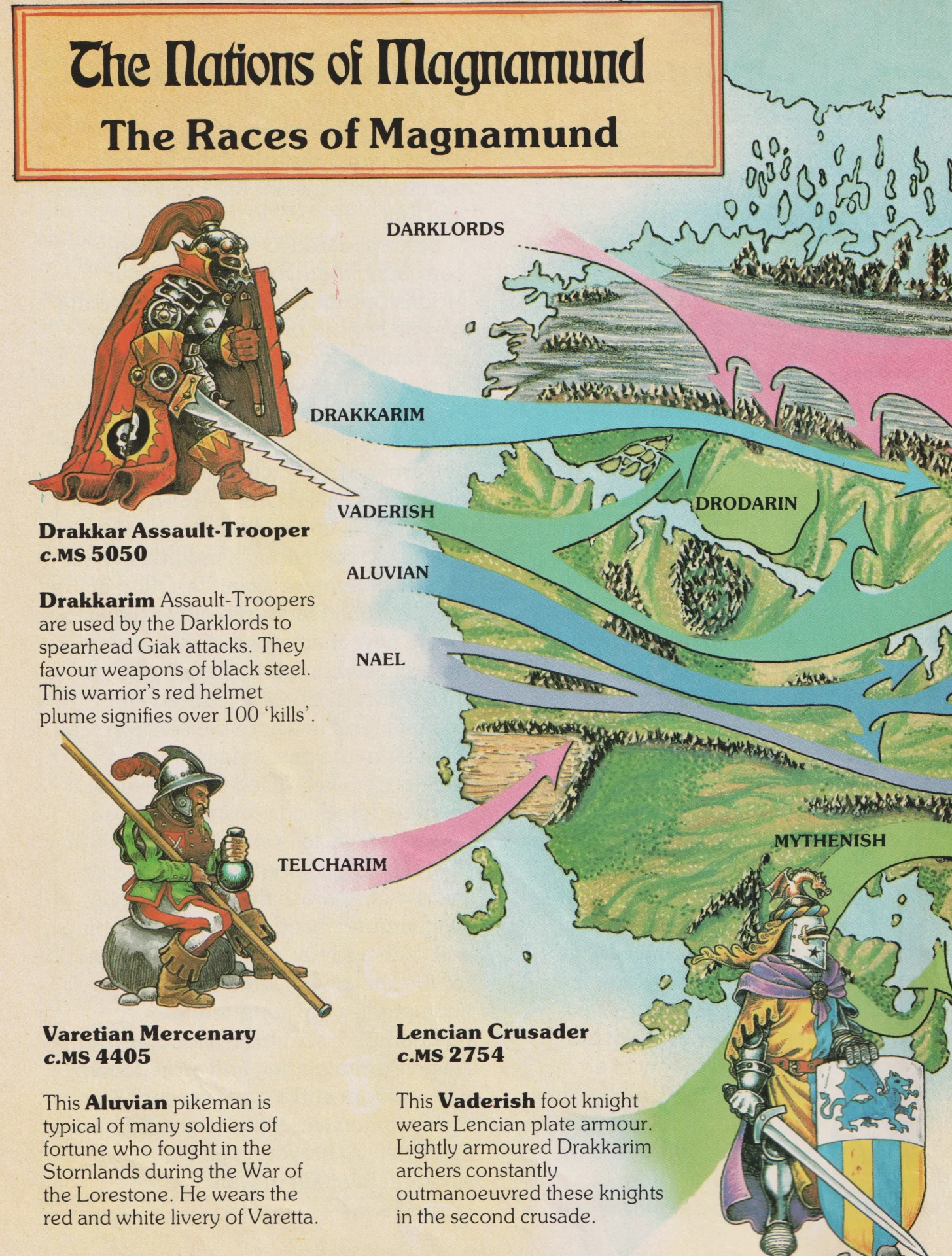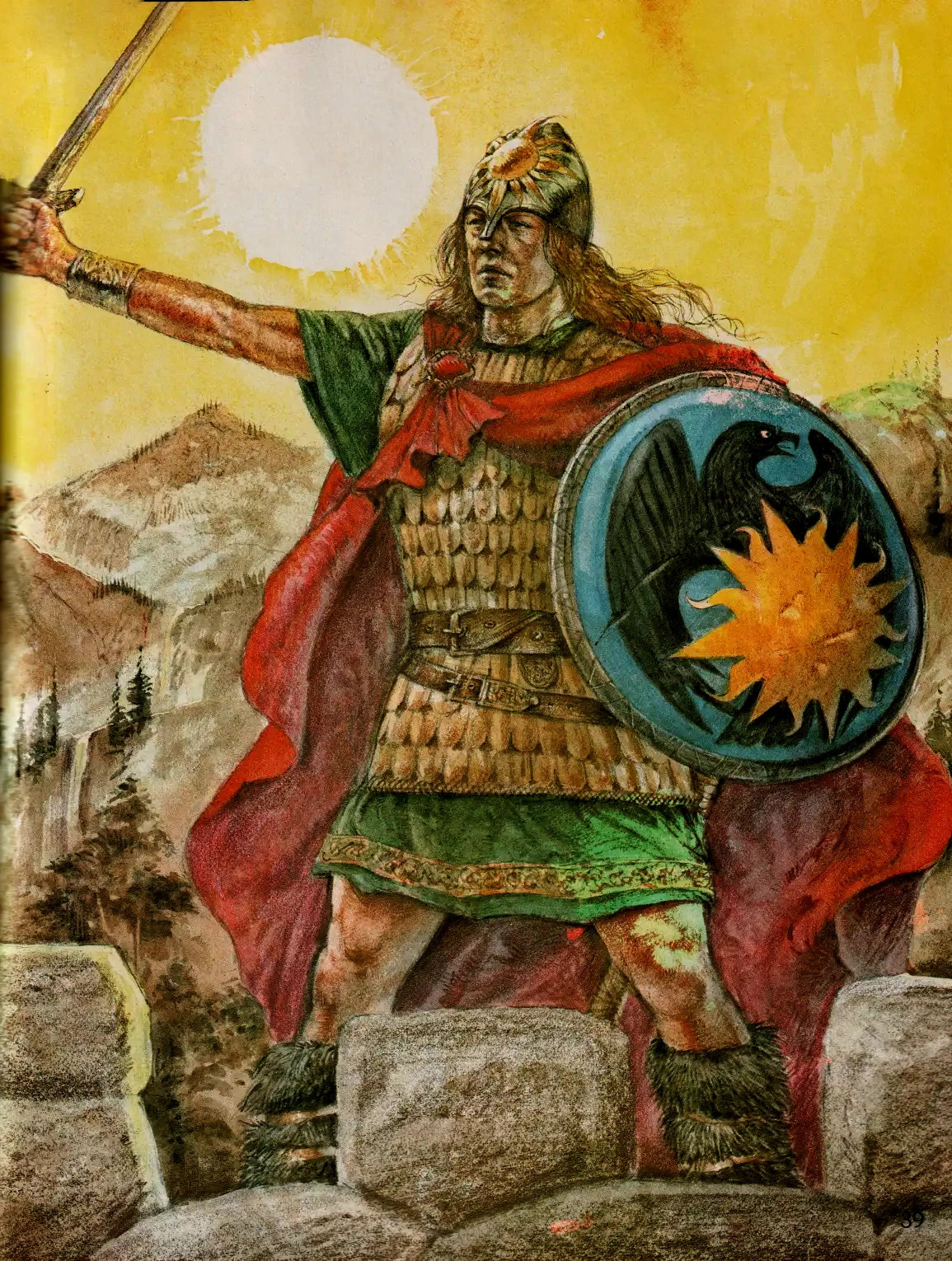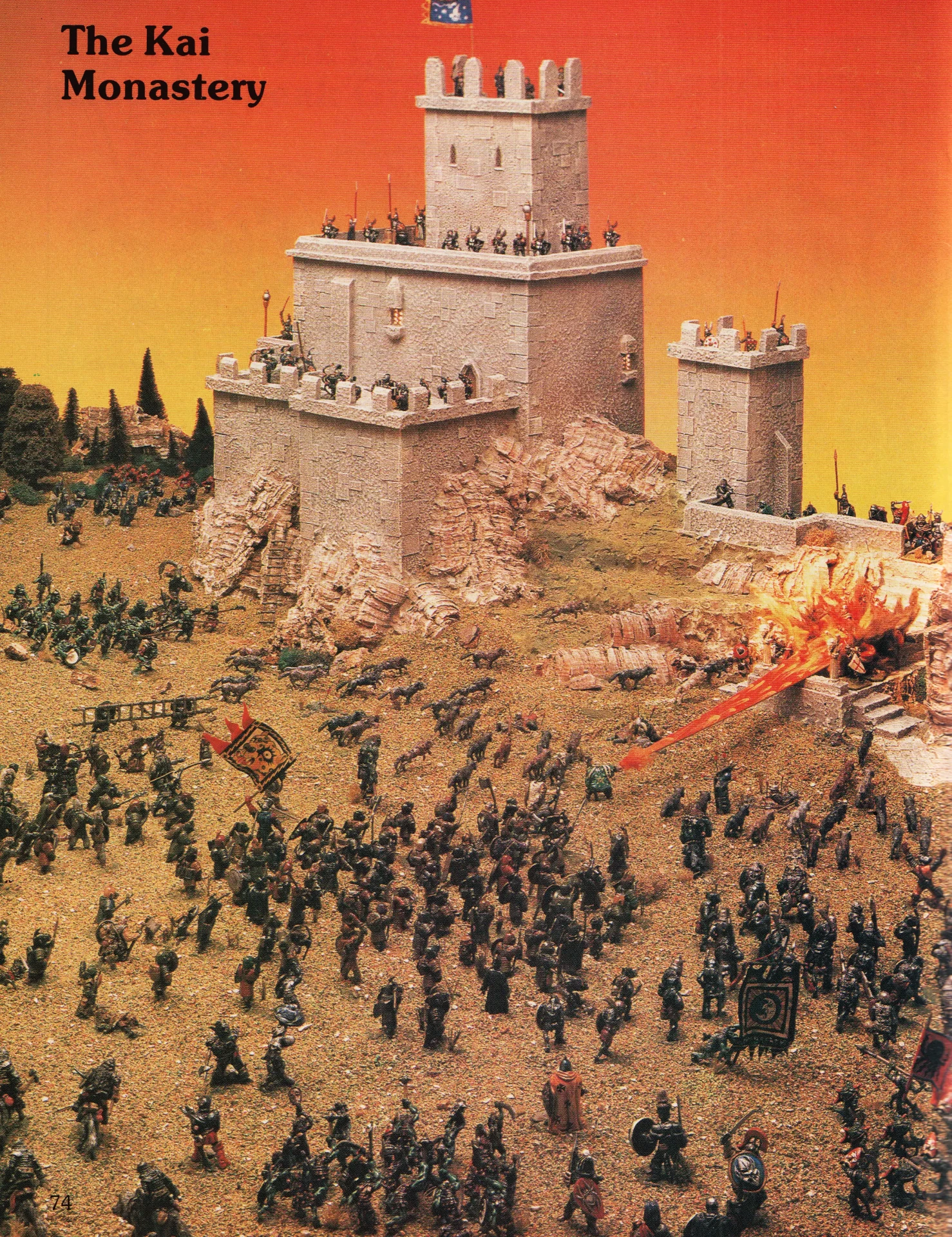Browsing through the local second-hand market, I came across a rare game book called Magnamund Companion. This 100 page soft cover book was sort of a setting guide for Joe Dever's Lone Wolf RPG series. Now that I own a copy, I've read it from cover to cover, and this is my review.
Lone Wolf is a series of solo RPG books, a little like Fighting Fantasy (or the Choose your own adventure series), and from a similar lineage. Joe Dever, according to the biographies in the front of his books, got started in the world of roleplaying games when he played and won a D&D tournament. From there, he got a job at Games Workshop (the company largely responsible for the Fiend Folio back in the early days of D&D, but today best known for Warhammer). Then he started publishing solo RPG adventures, mostly set in the world of Magnamund.
My introduction to Joe Dever's work was as a kid. I was forbidden from playing D&D due to a craze that we now know as the "Satanic Panic", but I managed to get my parents to buy me Joe Dever books because they didn't look like an RPG book. They looked like "normal" books, and it never occurred to any parent or teacher that the book could be played like a game. You kept a character sheet to track your stats and gear, and you went into combat using a hit table in the back of the book. The book was entirely self-contained, and required no dice. To roll, you closed your eyes and pointed the eraser end of your pencil at a random number chart, then opened your eyes to see what you'd landed on. It worked like a charm, rendering great game play while betraying no sign that you were secretly playing a game.
Magnamund source book
The world of the bulk of his game books was Magnamund. Because there were over 30 books in the Lone Wolf series, you could learn a lot about the game world from context. And to be fair, that's enough to play the game books. You get used to things, like Helgedad being the region of all the baddies, Durenor is an important historical ally, the Sommerlund is home, and so on. But the more you read, the more you start to wonder about the details. What is a Giak and why is it so mean? What's a Kraan and why do Giak ride them? How many kingdoms are there in Magnamund, and what are they, and who lives there?

The Magnamund Companion isn't quite a source book to the degree that after reading it you'd be fully prepared to, say, run an RPG game in the setting. However, it does a great job of connecting a lot of the bits and pieces of lore you pick up while playing the game books, and revealing a great deal of the world's ancient history. The bulk of the Magnamund Companion covers the historical ages of Magnamund (including its creation myth), the many nations within Magnamund (including the livery of major national armies), the evil Darklords, the noble Kai lords (which is what you play in the Lone Wolf series), and Sommerlund (the main region of the books).
There are several maps included, and not just as token fantasy tropes. One set of maps provides a sort of topographical view of the land, while another set provides a political view with lines of nations drawn on. They're great references to have on hand, both while studying Magnamund and while playing any one of the books.
Ragadorn ale-house brawl
The front cover of the Magnamund Companion advertises that it contains new roleplaying games. One is a solo adventure, which you might expect from the author of the Lone Wolf series. But the first game in the book is Ragadorn ale-house brawl, a roleplaying-wargame hybrid. It's not unlike early Warhammer games, like Rogue Trader, where there's an expectation for players to roleplay their characters within the confines of rigidly defined rounds. It's a fascinating solution to one of the primary issues that separates wargames from roleplaying games to this day. Modern games either have rounds, or they have modes of play, and if you have rounds then you're a wargame and if you have modes of play (which may include a mode with rounds) then you're an RPG. Some early games (mostly from the UK) tried to combine the two.
There are 10 player characters provided in the book, each with its own stat block and, most importantly, a unique objective. You can play with up to 10 players. No matter how many players there are, no player ever has the same win condition as another player. The Durenor Knight, for instance, must apprehend the killer of his brother. The Adventuress must locate a diamond hidden somewhere in the tavern, and then escape without being arrested by the Knight who hunts for her. Lone Wolf, the Kai lord from the book series, must find a Helghast and kill it. Everybody's playing a different game, but inevitably they'll interact in one way or another.
The board is a 10-by-11 grid, and cut-out player and item tokens are provided. During each phase of each round, each player takes a turn performing an action. First, you move your token, then you make missile attacks as appropriate, then combat as appropriate, and then you can gamble at the gaming tables in the tavern. During any phase, you can also interact with another player character (there's no mechanic to limit how long interactions go on, so I don't know how you keep the game moving).
The Landlord is a special player character. As landlord, you own the tavern and you employ 2 serving girls. Your objective is to earn 40 gold pieces at the gambling tables, and to ensure the safety of your 2 serving girls. The landlord also plays the role of Games Master. It's the landlord who sets up the board, placed hidden object tokens, and runs the game.
The difficulty of a missile attack is based on the distance between you and your target, and a poke at the random number chart determines success. Melee combat is resolved using a combat ratio chart, identical to the one in Lone Wold books. The player character with a higher combat skill has a greater chance, at least with a good random number result, of dealing more damage than the player character with the lower combat skill. When there's little or no differenc in skill, or With a particularly bad random number result, both sides can take damage during melee.
I've played the game a few times, and while solo play doesn't do it justice, it's a fun little wargame. Roleplay isn't quite the same when there's nobody else around, and the combat skill chart used in melee gets confusing when a miniature is the defender one moment, and then the attacker the next. This is definitely a game that would be best with more than a single player, but it's unique mix of wargame and roleplay is intriguing, and I'd love to give it a try with someone familiar with the world of Magnamund and the Lone Wolf series.
Lore of Magnamund
This book covers a lot of ground. There's history, army structure, livery, the layout of a typical Kai monastery, history, charts, timelines, slice-of-life biographies of commoners, and even an explanation of the language of the evil Giak.

Most of the lore is inconsequential. You don't need it to understand the world of Lone Wolf, much less to play the solo game books. But knowing the lore reveals a nuance you only could guess at before.
Modeling
Finally, there's a section in the book about modeling Magnamund so you can use it as a setting for tabletop games. I'm not entirely sure what rule set you're meant to use for these tabletop games. On the one hand, I assume the intent was that Ragadorn ale-house brawl would provide a system you could use in more locations than just an ale-house, but then again the rules are pretty specific to the scenario. I'm not sure that the missile system provided in that game would translate elegantly to a mass battle game like the one presumably being depicted in the modeling section.

It's possible that Joe Dever imagined that games set in Magnamund could be used in whatever wargame any given reader preferred, but I think it's noteworthy that he specifically recommends Citadel miniatures. In fact, Citadel apparently had miniatures designed for Magnamund at that point. Warhammer fantasy would have been just 3 years old at the time of publication, so it's reasonable to think that Joe Dever would have intended Magnamund armies to use Warhammer rules.
For Sommerlund and the Kai
The Magnamund Companion is a fun look at the world of Lone Wolf. While it exists online (with Joe Dever's permission), it's nice to have a physical copy of it, and I only wish I'd known about it decades ago!